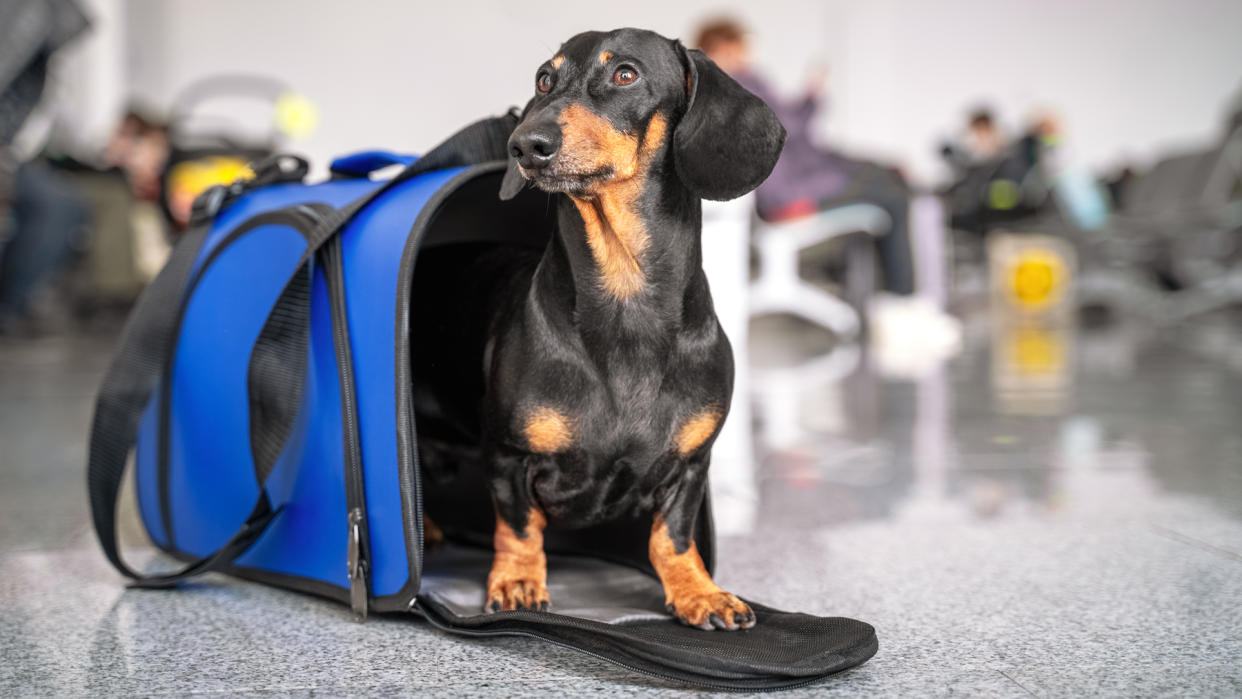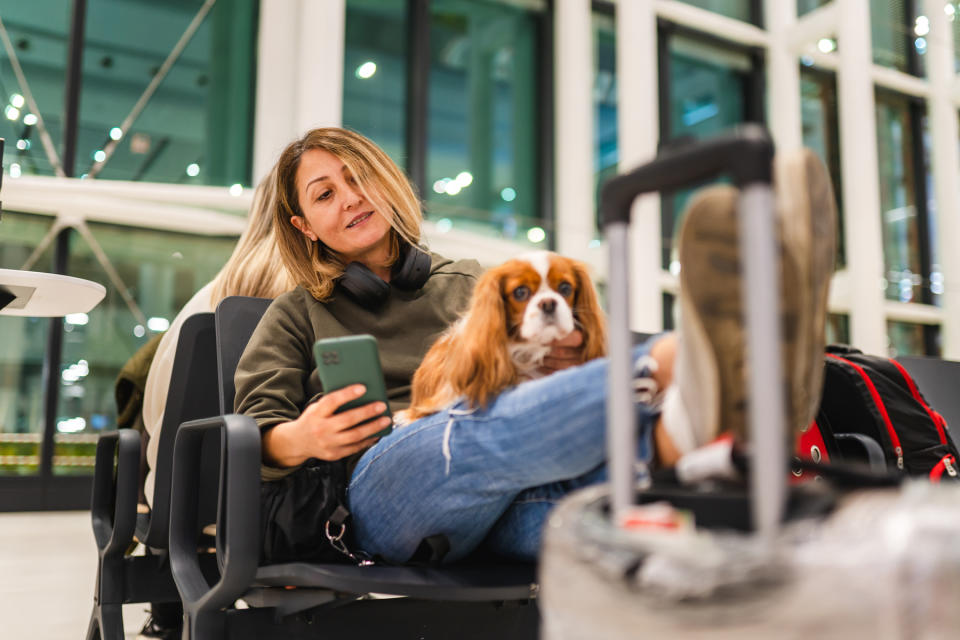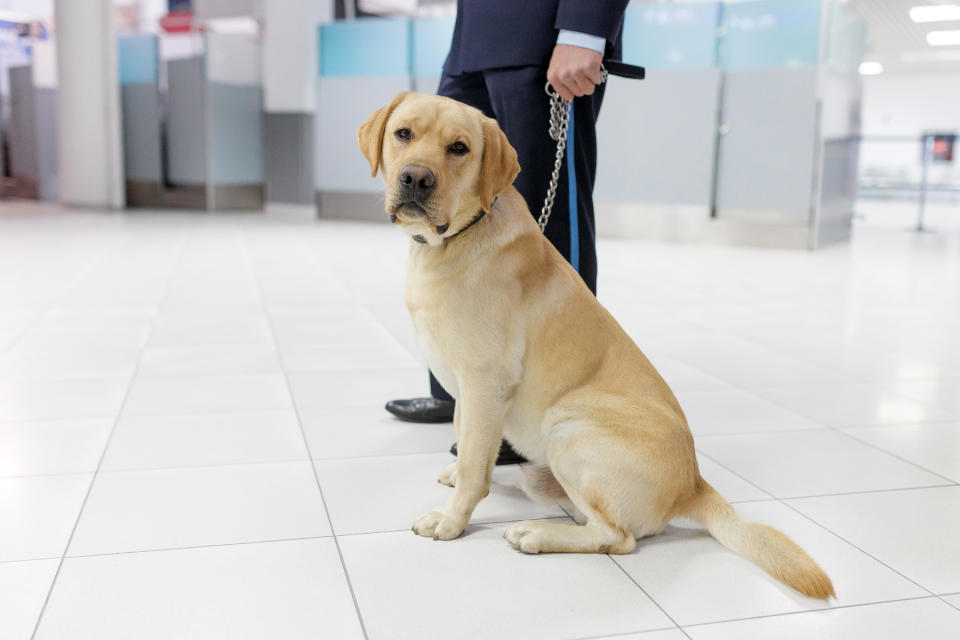How to travel with a dog by plane

How to travel with a dog by plane is a question asked by more canine owners than you may think. Our dogs are considered part of our families. When our lives give us opportunities to work and travel in different cities or countries, it often requires air travel to get there. As we prepare our visas and travel documents, advance preparation is also necessary to fly with a dog by plane.
Dog owners may be feeling overwhelmed with all the details involved in the dog’s flight. There is the daunting thought of how your dog will react to being on a plane, especially if it’s a longhaul flight where some of the longest lasting dog chews won’t go a miss, and there are the logistics of it all such as the costs and travel requirements that owners will want to understand better.
It's helpful to heed the advice of an expert, so we spoke to Bellina Tan, a professional pet relocator who has successfully transported hundreds of pets, specializing in Australia, Asia, UK and the US travel. Tan from Pet Embassy, shares her expertise with Pets Radar, giving us valuable advice for flying with our beloved dog.
Whether you’re flying to another city or to a distant country, just keep reading to find out how to travel with a dog on a plane.
Can I fly with a dog on the plane?
“Some countries permit pets to arrive with passengers as checked baggage or in the cabin. This is largely dependent on the country and the airline’s regulation,” Tan points out.
The first thing to do is to check the airline regulations as well as the rules enforced by the country you are leaving and the country of destination. It is also important to consider the breed, size, and age of your dog.
There have been many concerns about brachycephalic breeds or snub-nosed dogs. There are often higher risks for these types of dogs than other breeds, and you will need to take special precautions when flying them. Many airlines will refuse to fly snub-nose breeds due to the risks involved. There are certain countries where certain breeds like the American Staffordshire Terrier, Bull Terrier, and Pit Bull Terrier are prohibited.
A pet can also travel without its owner as manifest cargo. “Manifest cargo is the best option for pets traveling without their owners, as they do not require their owner to be on the same flight,” says Tan. “This allows pet owners to travel ahead to their new destinations and make sure everything is prepared for their furry family’s arrival. Pets traveling as manifest cargo and excess baggage travel in the baggage compartment in a pressurized, temperature-controlled area reserved just for pets.”
Unlike pets traveling as excess baggage, pets traveling as manifest cargo can be tracked throughout their trip by an Air Waybill. Shipping pets as manifest cargo is more expensive than transporting them as in-cabin and excess baggage.
“When a pet travels as manifest cargo, the airline takes over the pet during the travel, not just for the container. Your pet will travel on an Air Waybill (AWB) and the airline may require the consignee at destination to acknowledge an ‘OK-to-Forward’ before we can even load the animal on the plane at departure,” emphasizes Tan.
Is it expensive?
As the cost of travel has increased for passengers, the cost of relocating a dogs is substantially expensive. “The cost varies depending on the size, breed of pet, flight routing, and destination,” Tan emphasizes.
When considering air travel for your dog, it's essential to be aware of the associated expenses. As Tan points out, the cost can vary depending on factors such as the airline's policies, whether your dog will travel in-cabin or in the cargo hold, health certificates and vaccinations, the price of an airline-approved travel crate, additional fees for pet handling and services, and the option of hiring a pet travel agent. Pet travel insurance is also worth considering to cover unexpected veterinary expenses.
Plan ahead, book well in advance, and price up different airlines to secure the best rates. Always prioritize your dog's safety and comfort, and if necessary, explore alternative transportation methods if plane travel isn't suitable for your pet.

Can a dog sit in the cabin?
While many people dream of sitting in the cabin with their dogs, this is not possible for all dogs.
“Some countries permit pets to arrive with passengers in the cabin. This is largely dependent on country and airline regulations,” Tan explains.
Airlines set limitations on the size and weight of the pets allowed in the cabin. Small dogs must meet the measurements specified by the airlines and fit in the approved carriers in front of the passenger seat.
In addition, there are countries like Australia where animals cannot fly in the cabin. Animals must travel in the temperature and noise-controlled cargo to enter Australia and adhere to the rules, documentation, and quarantine required.
How to prepare a dog for the day of flying?
Making the dogs comfortable on their flight is the ultimate concern of dog owners. A seasoned pet relocator like Tan is experienced in putting them at ease, with a list of things dog owners should prepare before the big day of flying:
“Days before flying, it is important to work on the veterinary requirements. This varies and is dependent on the country’s regulation and the pet’s needs.”
“Exercise is crucial preparation for dogs before their trip. Tired pets make for better travelers and help to work off nervous energy.” Tan cannot emphasize this enough. A walk before boarding the plane helps them travel comfortably.
“Some pets may suffer from air sickness," says Tan. Therefore, you will want to consider how far in advance your dog will eat before boarding a flight and discuss it with your vet to make sure you aren't under or over feeding your dog before traveling.
Tan adds, “Water is always encouraged. Hydration is important and each crate is always fitted with a container with drinking water.”
“Start early with crate training. Get your pet used to the crate at least four weeks before departure.”
“A visit to the groomers before the flight is a good idea. Keeping the coat clean and short will prevent any matted furs should it get soiled. Keeping nails short will prevent potential injuries too.”

What about anxious dogs?
“We usually strongly advise against any sedatives. I only ever recommend using natural calming methods such as rescue remedies, calming collars, calming sprays etc. Using sedatives can actually be much more harmful for pets when travelling. These usually make them unable to control their heart rate which can cause health problems whilst traveling.
"It is too dangerous as the medication goes into the animal’s blood system, slows down the heartbeat, animal has difficulties controlling body temperature and movement. Sedatives have a different impact when traveling in a pressurized airplane at high altitudes and can therefore be very dangerous to the pet's health," explains Tan.
With the many details and moving parts involved in a dog’s plane trip, many people opt to enlist the services of a pet travel specialist. Agents like Tan handle the entire relocation from vet checks, documents, right down to flight booking, and working with a destination agent who will handle the import clearance on arrival.
It is worth noting checking if the relocator is an IPATA member. IPATA members are registered with the applicable organizations within their own country and adhere to the rules and regulations of the Live Animals Regulations of the International Air Transport Association (IATA). A pet travel professional facilitates the travel process with their knowledge and expertise in flights, flight regulations, airways pet policy, flight container requirements, pickup and delivery arrangements, quarantine, boarding, import and export arrangements, and proper identification. As requirements, regulations and restrictions change, the pet travel professional stays abreast of these changes and makes the necessary adjustments to your pet's travel arrangements.
With advanced planning and preparation, dogs can comfortably fly on a plane. The ultimate reward is the joy of going for walks and adventures in the new city you are moving to.

